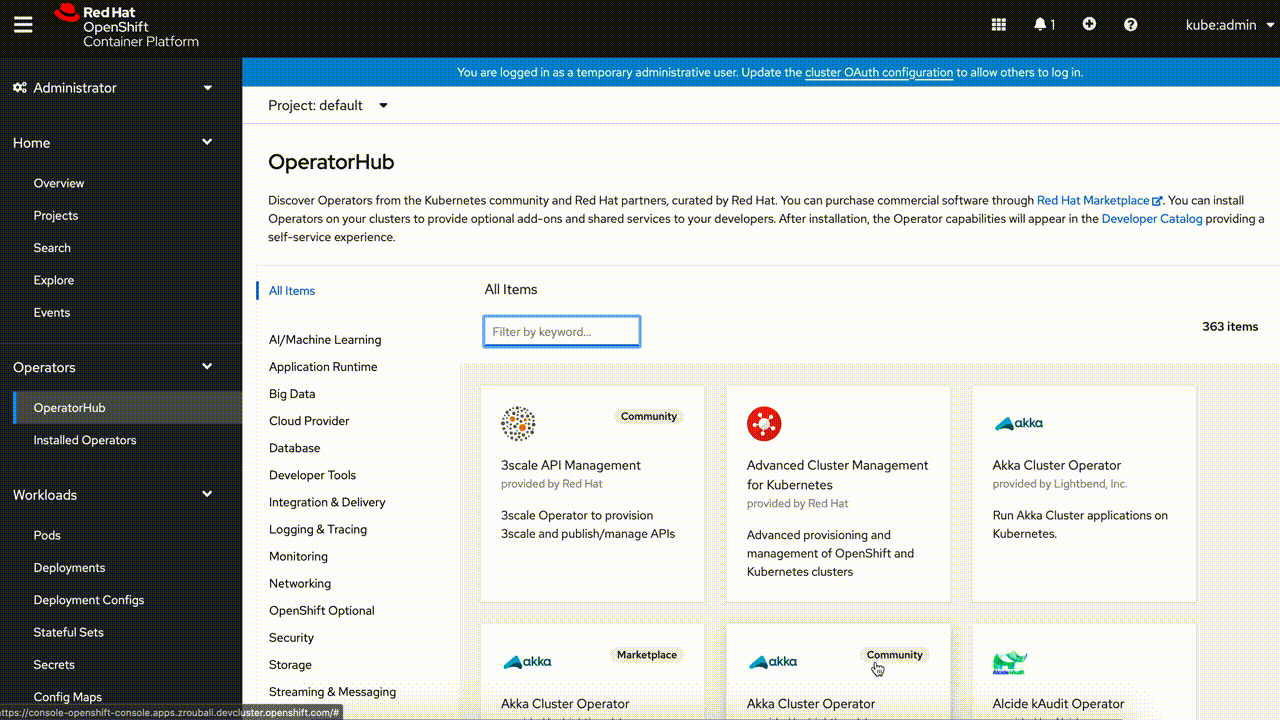Warning
You are currently viewing v"2.1" of the documentation and it is not the latest. For the most recent documentation, kindly click here.
Deploying KEDA Click here for latest
We provide a few approaches to deploy KEDA runtime in your Kubernetes clusters:
💡 NOTE: KEDA requires Kubernetes cluster version 1.16 and higher
Don’t see what you need? Feel free to create an issue on our GitHub repo.
Deploying KEDA with Helm is very simple:
Add Helm repo
helm repo add kedacore https://kedacore.github.io/charts
Update Helm repo
helm repo update
Install keda Helm chart
helm install keda kedacore/keda --version 2.1.0 --namespace keda --create-namespace
💡 Make sure to manually install the CRDs since Helm does not update nor add new CRDs. Learn more about it on kedacore/charts #139.
If you want to remove KEDA from a cluster you can run one of the following:
helm uninstall -n keda keda
kubectl delete -f https://raw.githubusercontent.com/kedacore/keda/v2.1.0/config/crd/bases/keda.sh_scaledobjects.yaml
kubectl delete -f https://raw.githubusercontent.com/kedacore/keda/v2.1.0/config/crd/bases/keda.sh_scaledjobs.yaml
kubectl delete -f https://raw.githubusercontent.com/kedacore/keda/v2.1.0/config/crd/bases/keda.sh_triggerauthentications.yaml
kubectl delete -f https://raw.githubusercontent.com/kedacore/keda/v2.1.0/config/crd/bases/keda.sh_clustertriggerauthentications.yaml
kedaKedaController resource named keda in namespace keda

💡 NOTE: Further information on Operator Hub installation method can be found in the following repository.
Locate installed KEDA Operator in keda namespace, then remove created KedaController resource and uninstall KEDA operator.
If you want to try KEDA on Minikube or a different Kubernetes deployment without using Helm you can still deploy it with kubectl.
2.1.0, with the one you are using):kubectl apply -f https://github.com/kedacore/keda/releases/download/v2.1.0/keda-2.1.0.yaml
kubectl apply -f keda-2.1.0.yaml
/config directory on our GitHub repo if you prefer to clone it.git clone https://github.com/kedacore/keda && cd keda
VERSION=2.1.0 make deploy
2.1.0, with the one you are using):kubectl delete -f https://github.com/kedacore/keda/releases/download/v2.1.0/keda-2.1.0.yaml
kubectl delete -f keda-2.1.0.yaml
VERSION=2.1.0 make undeploy
If you want to try KEDA v2 on MicroK8s from 1.20 channel, KEDA is included into MicroK8s addons.
microk8s enable keda
To uninstall KEDA in MicroK8s, simply disable the addon as shown below.
microk8s disable keda